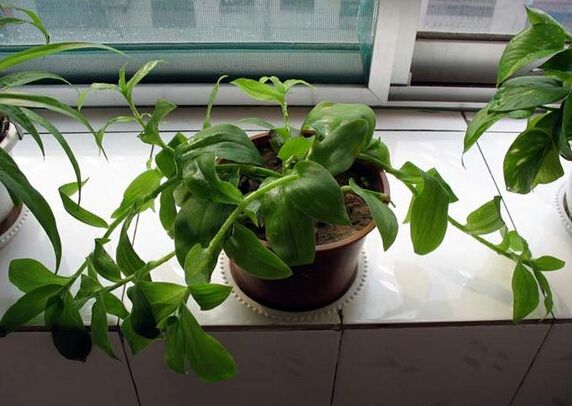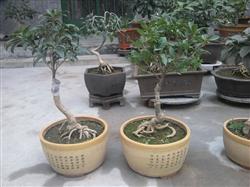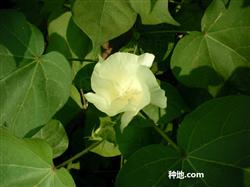bark moth Learn more about bark moth
-
Control techniques of bark moth in Litchi

Litchi bark moth not only harms litchi and longan, but also harms citrus, Acacia, Casuarina and other fruit trees and trees. The decay damages the branches and stems into tunnels, but mainly damages the cortex of the branches and seriously affects the growth. Damage to young trees can lead to death. Life habits: one a year
2020-11-08 Species litchi wood bark moth control technology -
Control of cherry blossom leopard bark moth

Leopard beetle, also known as six-star bark moth, belongs to Lepidoptera, Leopard bark moth family. Distribution and harm: it is distributed in Henan, Hebei, Shaanxi, Shandong and other provinces in China. Feed on a variety of fruit trees and flowers and branches with larvae. Injurious: there is a feeding ring between the xylem and phloem at the base of the injured branch, and there is a wormway from bottom to top. There are several fecal holes on the branches and a large number of long oval insect feces are excreted. The upper part of the injured branch yellowed and withered, and it was easy to break in case of wind. Morphological characteristics of adults: the length of female moth is 20-38 mm, and that of male moth is 17-30 mm.
2019-01-16 -
Occurrence and control of pear root cancer

Occurrence and control of pear root cancer
2018-07-10 -
Morphological characteristics and harmfulness of jujube bark moth

Jujube bark moth belongs to Lepidoptera, Lepidoptera. Also known as truncated bugs. The adult is 18-22 mm long, with white head, gray-white chest and abdomen, filiform antennae, 6 blue spots on the chest and back, 2 rows in the vertical row, irregular blue spots on the forewings, narrow stripes of black and blue in front of the sub-middle fold of the hindwing, and deep spots on the edge of the wings. There are three black longitudinal spots on the back of each segment of the abdomen, and there is a round spot on each side. Ovoid, light yellow in the first birth, densely reticulated. The larva is 30-40 mm long, the head is yellowish brown, the carcass is purplish red, and the forechest
2019-01-16 -
What are the characteristics of Robinia pseudoacacia valley moth? What is the method of prevention and control?

Robinia pseudoacacia valley moth is commonly known as Robinia pseudoacacia. It mainly harms Robinia pseudoacacia. When the larvae eat the trunk cortex, the tissue in the affected part is proliferated and expanded, the bark is warped and cracked, the skin is filled with rotten tissue, and the skin is sewn with insect dung, which can lead to the weakness of the tree and even the death of the whole plant. Adult, female moth 7 mm 10 mm long, wingspan 17 mm 22 mm, male moth slightly smaller; gray-white or black-brown body, gray-white chest and wing base; gray-white forewings mixed with grayish brown or dark-brown scales, wing base with erect dark-brown scale clusters, wing surface 2 horizontal scale clusters
2019-01-15 -
Control of jujube leopard bark moth

(1) artificial pruning: when pruning in early spring, the injured branches should be cut off to eliminate the overwintering insects and be destroyed centrally. (2) trapping and killing by black light was carried out during the emergence period of adults from June to July. (3) protect and make good use of natural enemy resources, such as cocoon wasps, ants and birds. (4) Chemical control: 80% dichlorvos 200 times solution was injected into the hole and sealed with mud.
2019-01-16 -
The occurrence regularity of Robinia pseudoacacia valley moth?

The occurrence regularity of Robinia pseudoacacia valley moth: Shandong occurs for 2 years a year, overwintering with different instar larvae of the second generation in the trunk tunnel. It was harmful to active feeding in late March of the following year, and the peak period of Eclosion was in the middle of May. Most of the eggs lay in the wounds of the branches or in the cracks in the bark, and the first generation of larvae began to hatch in mid-June. The newly hatched larvae move lively and sneak into the subcutaneous phloem and cork cortex, showing a longitudinally irregular tunnel. The injured site proliferated and expanded, and the bark warped and cracked. The mature larvae begin to pupate in the middle of July, the adults can be seen in the last ten days, and the emergence peak is in the middle of August.
2019-01-15 -
Prevention and control of diseases and insect pests of Brazilian wood cultivated in family

Brazilian wood is a foliage plant of the genus Dracaena, native to Guinea and widely distributed in the sub-African tropics. Guangzhou was introduced into China in the 1980s and became popular in Beijing after the 1990s. At the same time that more and more Brazilian wood enters the families of Chinese people
2019-04-21 -
What are the main diseases and insects of sweet-scented osmanthus?

Potted sweet-scented osmanthus often blooms rarely or does not bloom for a long time. How to make sweet-scented osmanthus blossom more, flowers fragrant, need to master the following main links: variety selection: different varieties of sweet-scented osmanthus, flowering time is not the same. If laurel, four seasons laurel and so on are early flowering varieties, there are several flowering characteristics in a year, some.
2018-07-19 -
Occurrence and control of main diseases and insect pests of sweet-scented osmanthus

Occurrence and control of main diseases and insect pests of sweet-scented osmanthus
2018-06-29 -
Comprehensive techniques for winter management of apple trees

Comprehensive techniques for winter management of apple trees
2018-07-14 -
The technology of preventing and controlling walnut limb moth

Techniques for preventing and controlling walnut lifting moth 1 morphological characteristics and occurrence regularity of walnut lifting moth belong to Lepidoptera, Lepidoptera. Scientific name: Atrijuglanshetaohei Yang, also known as walnut black. Distributed in Henan, Hebei, Beijing, Shan.
2018-05-29 -
Control methods of peach borer

Peach borer, also known as peach bark borer, peach spot borer, omnivorous pests, are distributed all over the country. Larvae harm the fruits or seeds of many kinds of fruit trees, such as winter jujube, peach, plum, persimmon, chestnut, apple, pear, pomegranate, Hawthorn and so on. When the fruit is damaged, it is full of insect dung, which causes rot, and when it is serious, it has a great impact on the yield and quality. Prevention and control methods: first, scrape the bark in early spring and block the tree hole. Use black light to trap and kill adults. 2. Spraying 1000 times of 50% phoxim or 50% dichlorvos emulsion 1200 during adult occurrence and peak spawning period
2019-01-15 -
Control of peach borer on jujube tree

Also known as peach moth, peach spot moth, omnivorous pests, throughout the country have distribution. The larvae harm fruits or seeds of winter jujube, peach, plum, persimmon, chestnut, apple, pear, pomegranate, hawthorn and other plants. When the fruit is damaged, it is full of insect droppings, causing serious decay.
2020-11-08 species jujube peach moth moth control also known as -
Common insect pests of Ginkgo biloba

The following are the common insect pests of Ginkgo biloba and their control methods
2018-10-21 -
Pest control of honeysuckle

Pest control of honeysuckle
2018-06-29 -
* * how to control cotton stem wood sac moth?

What diseases are there in cotton boll period? How to prevent and cure it? How to control cotton boll disease? Occurrence, climate and variety of cotton boll disease. There is a close relationship between insect pests and cultivation techniques during the growth period, so the prevention and control of cotton boll diseases should be based on cultivation management combined with chemical protection. (.)
2019-01-18 -
* * how to control cotton stem wood sac moth?

What diseases are there in cotton boll period? How to prevent and cure it? How to control cotton boll disease? Occurrence, climate and variety of cotton boll disease. There is a close relationship between insect pests and cultivation techniques during the growth period, so the prevention and control of cotton boll diseases should be based on cultivation management combined with chemical protection. (.)
2019-02-20 -
Zero Pesticide Pest Control Technology in sightseeing picking Orchard

"Zero Pesticide" Pest Control Technology in sightseeing picking Orchard "Zero Pesticide" Pest Control Technology is based on the artificial and physical control of pests during the dormant period of fruit trees, according to the biological characteristics of pests and during the occurrence of pests.
2018-06-02 -
What are the main pests of sweet-scented osmanthus?

What are the main pests of sweet-scented osmanthus? How to control sweet-scented osmanthus pests? We also ask experienced netizens to help introduce the common pests of sweet-scented osmanthus, such as gibbous insects, shell insects, thorn moths and coir moths. The planting net has sorted out the harm and control methods of the above pests to sweet-scented osmanthus trees.
2018-07-17
